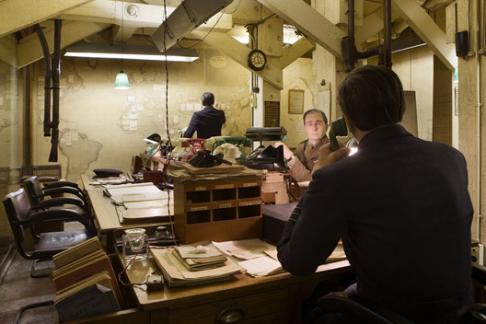Gratis
Apoyo

The world-famous 86th and 102nd floor Observatories offer unmatched views of New York City and on a clear day one can see to New Jersey, Connecticut, Massachusetts, Pennsylvania and Delaware. 1,050 feet above the city’s bustling streets, the 86th floor Observatory offers panoramic views from within a glass-enclosed pavilion and from the surrounding open-air promenade. 200 feet higher, our 102nd floor Observatory is a private and serene perch in the middle of the greatest city in the world. The Observatories have been a “must visit” for millions each year since it opened to the public in 1931. Each year approximately four million people are whisked to our 86th and 102nd floors, consistently one of New York City’s top tourist attractions. Visit the Observatories 365 days per year, day and night, rain or shine, for magnificent views of Manhattan and beyond. The Empire State Building embodies the feeling and spirit of New York City. It is recognized not only as an iconic landmark offering some of the most spectacular views on earth, but also as an international symbol of shared hopes, dreams, and accomplishment. Building Information 1,050 feet to the 86th floor Observatory 1,250 feet to the 102nd floor Observatory 1,453 feet, 8 9/16 inches to the tip of the broadcast tower Broadcast tower adds 203 feet 8 9/16 inches 103 floors 1,872 steps to the 103rd floor Sits on 79,288 square feet, approximately 2 acres Weighs 365,000 tons Volume is 37 million cubic feet 200,000 cubic feet of Indiana limestone & granite exterior cladding An estimated ten million bricks were used in construction 730 tons of aluminum and stainless steel were used in construction 57,000 tons of steel were used in construction Contains 473 miles of electrical wiring and 70 miles of pipe 6,514 windows 210 columns at the base support the entire weight of the building Construction was completed in one year and 45 days Seven million man-hours went into constructing the Empire State Building Final cost of property and construction was $41 million 73 elevators Five entrances 2.85 million rentable square feet Madame Tussauds New York There’s so much to see and do at Madame Tussauds, interact with, take pictures of and get up close and personal with over 220 life-like wax figures of celebrities, politicians & icons from the past and present. Experience the magic our of Cinema 4D theatre, that delivers 3D technology with the latest in 4D special effects! Scare yourself silly with the dark side of Madame Tussauds in SCREAM, our live-actor filled attraction and finally immerse yourself in the real essence of New York City in our newest exhibit, The Spirit of New York! Located in the heart of Times Square, no visit is complete until you’ve experienced the world famous Madame Tussauds. The Spirit of New York – 2,000 square foot exhibit Experience the Spirit of New York, our new interactive exhibit celebrating New York's greatest icons and unforgettable moments. Immerse yourself in everything that is New York with a vibrant walk through the city's history along with iconic wax figures of yesterday and today. From classic movie scenes to moments that lifted spirits and shook history, a stop in NYC is not complete until you've experienced the world-famous Madame Tussauds. Stand along side Marilyn Monroe in a classic NY scene, ring the bell at the Stock Exchange, and reflect on the past at the 9/11 Memorial. Take a scenic stroll through Central Park, sit behind the wheel of a real NY cab or step on set of the "LIVE! with Regis & Kelly" show for your very own interview! From the Brooklyn Bridge to Broadway, there is only one place in the city where you can experience so much of New York without ever leaving Times Square. Look no further, it's all at Madame Tussauds New York!? Your All Access Pass includes: Entrance to the attraction featuring over 220 life-like wax figures of the world’s most fascinating celebrities and historical figures SCREAM! – Our live interactive scare experience. Enter if you dare! The Cinema 4D Experience – including the life story of Madame Tussauds. Experience one of our feature films with amazing 3D technology and the latest in 4D special effects including wind, snow, mist, scent and digital surround sound The Spirit of New York and a brand new VIP Room
Ensembles de tubes souples en silicone rechargeable
Xiaomi Sac de trousse de premiers soins portable
